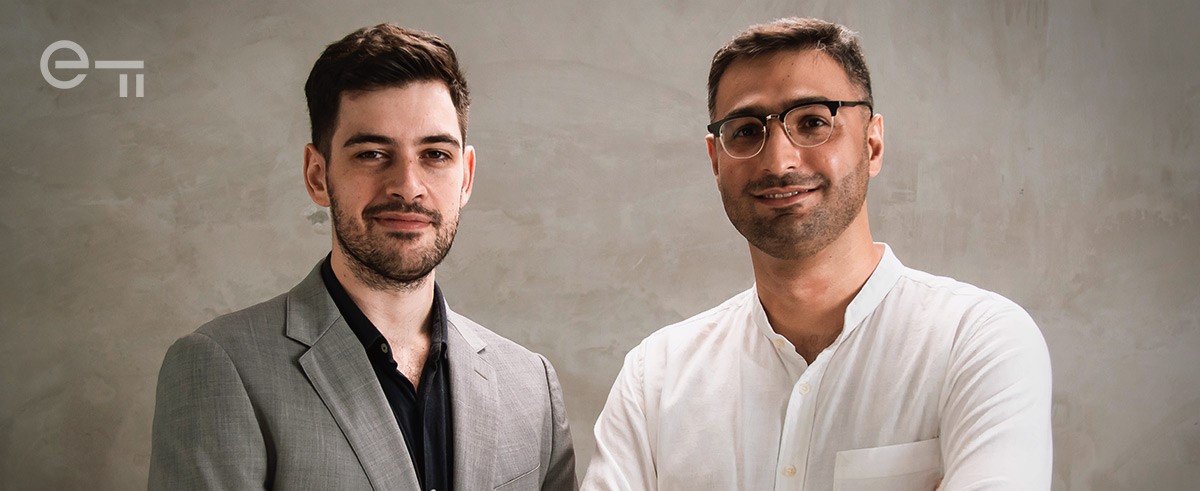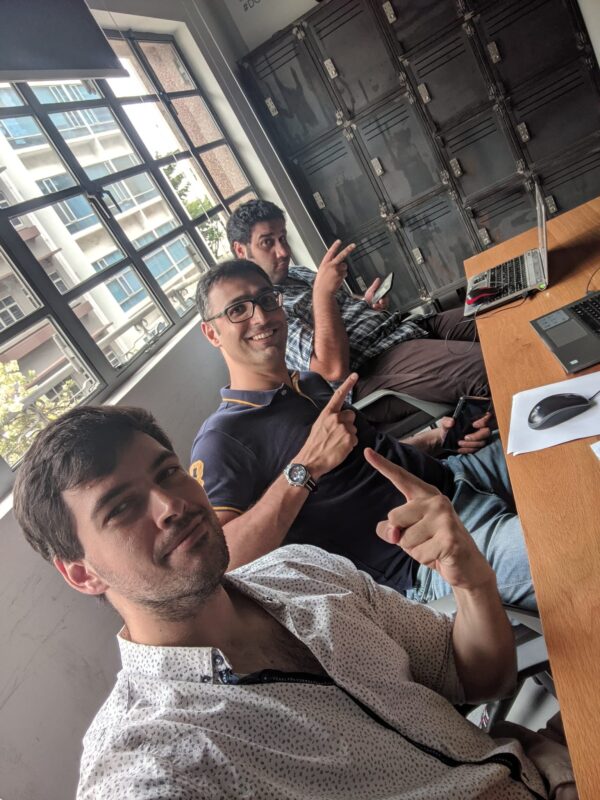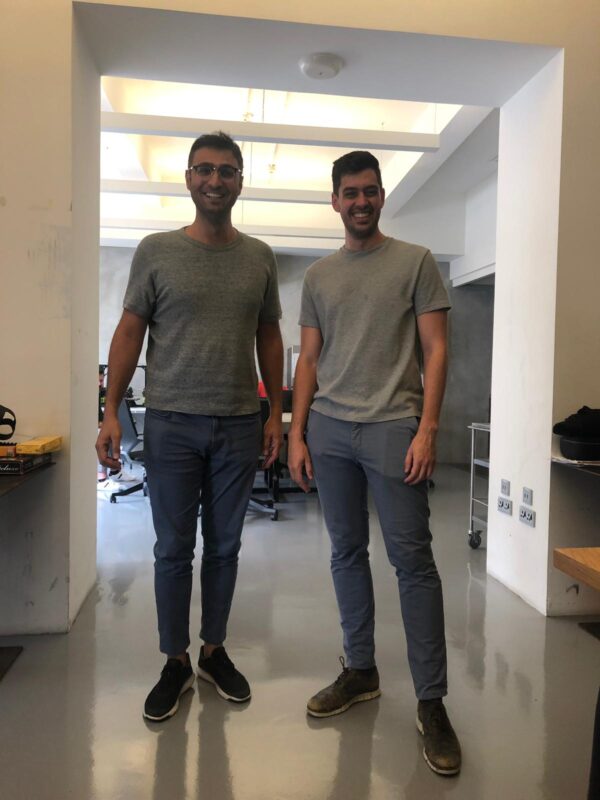Understanding DiviGas and Its Core Technology
Q: Can you share some background about DiviGas?
A: At DiviGas, we’re all about hydrogen separation membranes. Think of it as a special filter. We use a steel tube sealed with epoxy that houses a bunch of fibers inside. The fibers are the heart of our technology, and they function a bit like lungs. Just as lungs separate nitrogen and oxygen from the air we breathe, our filters take in mixed gases that include hydrogen and purify it up to 99.95%. This is super handy for various industrial uses like refineries and other hydrogen startups.
The current filters out there can be complicated to use and have some limitations. Our fiber tech simplifies the whole process. We’ve got fewer steps for pre-treatment, and it’s super robust. In essence, we’re a material science startup, diving deep into nanomolecular polymer science. We’ve raised $7.5 million so far and have a factory down in Melbourne, Australia.
The Motive Behind of Entrepreneurs First Decision
Q: What made you decide to apply to Entrepreneurs First?
A: Most accelerators like YC or Techstars want you to come in with an idea and some traction. Entrepreneurs First is different. You can apply even if you don’t have a full-blown company yet. That caught my eye. I was scouting for my next venture after wrapping up my previous gig in 2018. Entrepreneurs First is active in various global cities, and they offer a unique, low-risk approach.
They throw you into a room with like 80 other entrepreneurial minds and basically say, “Go nuts, brainstorm!” You’re even paid a basic salary to do so. Once you find a co-founder, which is mandatory by the way, they test your team’s chemistry by trying to break you up. If you survive, you pitch to an investment committee. If they dig your idea, you get $50K to kickstart your company.
The focus here is on finding a solid co-founder and coming up with an original idea. That was music to my ears because let’s face it, finding a compatible co-founder with a unique idea is tough. A lot of people are stuck rehashing the same concepts. Entrepreneurs First leans into deep tech, which suited me even though I was one of the few “business people” in the mix. They took a chance on me primarily because of my experience in building companies.
The Entrepreneurs First Application Process
Q: Can you outline how the application process at Entrepreneurs First works?
A: The process is pretty straightforward. You start by heading over to their website, joinef.com, where you can fill out a form. Entrepreneurs First also has recruiters you can reach out to. Once your initial application gets the green light, you go through two or three rounds of interviews. At least, that’s how it was when I applied in 2019, and I believe it’s still similar.
The interviews vary in their focus but what they’re trying to suss out is whether you’ve got that startup mindset or if you can develop it. They’re very open to people who haven’t dipped their toes into the startup world yet. Take my co-founder, for instance, he’s a PhD scientist. Now, not all PhDs make great startup folks, mainly because the risk tolerance is different. But Entrepreneurs First looks for those exceptions, like my co-founder, who can handle risk well.
During the interviews, they’re evaluating your ability to both form a team and possibly break it up while still sticking with the program. They want to know if you’re so fixated on one idea that you’re not open to anything else. They’re looking for flexibility and the understanding that failure is a part of the game. It’s all about convincing them that you’ve got, or can develop that startup mindset.
The Co-Founder Connection and Ideation Journey
Q: Can you talk about how you met your co-founder and how the idea came to life?
A: Despite the program’s focus on coming together to brainstorm ideas, my co-founder Ali already had the idea locked in. I was initially partnered with another guy, who’s still a good friend, working on computer vision for gun detection. But, after a couple of weeks, I realized that I wasn’t keen on the security industry. Too many ex-cops and military folks for my taste.
I break away and find myself floating around. Entrepreneurs First nudges me to team up with one of the few people still available—Ali. The guy’s deep into science talk, spouting selectivity and permeance numbers that make zero sense to anyone not knee-deep in polymer science. But, they’re like, “Just listen to him, rework his presentation, and pitch it tomorrow.” I do just that, and surprisingly, the crowd’s like, “Yeah, this makes sense; it’s good.” I stick around, and continue refining his presentation, even though I’m a bit hesitant because, it’s advanced science, and my chemistry level is high school at best.
Fast forward a couple of weeks, and we’re already talking to clients who want $4 million worth of the product. That was the wake-up call for me. I mean, I’m not even sure what exactly I’m selling, and Ali isn’t the salesman type. Yet, here we are with clients lining up. It’s too good to pass up. So, I dig in and invest time in learning the ropes. Then the pandemic hit, which actually gave me the time to get my chemistry game up to a level where I can now hold my own.
In a nutshell, we clicked because the traction was impossible to ignore. The client we spoke to four years ago is still waiting for his product and hasn’t bailed. That says a lot.
Entrepreneurs First Funding Landscape
Q: Did Entrepreneurs First provide any funding?
A: We got a nice chunk of change from Entrepreneurs First, but they’re just part of our larger funding tapestry. Our heaviest hitter is Volta Energy Technologies; you can check them out at volta.vc. Then there’s SOSV, another key player in our corner.
Don’t want to forget that Energy Revolution Ventures; has also chipped in. Overall, it’s a smorgasbord of backers—primarily from the U.S., but we’ve got some love from London and a dash of Asia. We’re working with a diverse group of VCs that align with our vision.
The Real Benefit of the Program
Q: What were the biggest benefits you got from Entrepreneurs First, besides the funding?
A: Where do I start? First and foremost, I got a co-founder out of it. And let’s be real, that’s pretty much the golden ticket in startup land.
Beyond that, the network. Our cohort—tagged EF SG6, for the uninitiated—has been killer. Most of us are still in the game and doing well. We’re not just fellow entrepreneurs; we’re friends, advisors, and each other’s hype crew. We’ve got this close-knit network that’s been invaluable. And let me tell you, that’s not something you appreciate on day one, but as time goes by, you realize the power of that cohort.
You might be sharing the same space initially, but eventually, you’re sharing a lot more. Ideas, advice, struggles—you name it. It’s a support system you can’t put a price tag on. It’s not just about the money or even the co-founder; it’s the whole ensemble, this network of like-minded go-getters, that makes the experience so impactful.
Q: Any ‘aha’ moments during the Entrepreneurs First program that stood out for you?
A: The big inspiring moment was all about the clients. I mean, here we were, a couple of guys—one who knew the science but couldn’t sell his way out of a paper bag, and the other, yours truly, who was just piecing it together. And yet, despite our fumbling, clients were knocking down our door.
The instant product-market fit was a wake-up call, like a splash of cold water. Clients were saying, “Yes, I want tons of this—if it works, count me in for a massive order.” I was like, “Seriously?” Given that Ali and I weren’t exactly a dynamic sales duo at the time, that was huge.
Ali would often miss the mark, answering questions clients weren’t asking. And still, the demand was through the roof. That’s when it hit us: our product had a unique edge that people were starving for. It wasn’t about perfecting the sales pitch; it was about having something truly different to offer. That was the ‘aha’ moment, the unexpected validation that told us we were onto something real.
From Factory to Market
Q: Where’s the company at these days?
A: It’s go-time. We’re on the cusp of shipping out our first product. We’ve been grappling with delays, particularly around our sealant. Not our core tech, but still crucial—gotta keep that steel tube thingy all sealed up.
We’ve got this monster of a factory that’s capable of pumping out up to $30 million worth of product a year. Just gotta flip the switch. And the pipeline’s humming, tons of clients waiting in the wings. It’s like holding your breath before a big dive.
Primarily we focus on Europe and the US markets. That’s where the action’s been. We’re a lean team of 10, intentionally small but mighty. Most of our funding has gone straight into the factory. Our goal is to ramp up production and get this product into the hands of as many folks as possible, as soon as humanly possible.
Final Thoughts
Q: Any final tips for founders considering a stint at EF?
A: One of the real gems about EF is its low-risk central. Once you get through their investment committee, they inject you with a cool 50k and snag 10% of the company. Fair game, considering they’re handing you the toolkit to build your startup from the ground up. Sometimes, they even double down and invest more down the line.
But here’s the kicker—if things don’t pan out, you’re not tied down. No strings attached. You don’t have to give back the money, and you don’t owe your future company to them or anything. It’s almost like you get a no-risk playground to test your entrepreneurial mettle. Don’t like what you’re building? No sweat, pivot, or exit. You can even take another swing at EF later on if you want. It’s the freedom to try, fail, and try again that makes this such a killer opportunity.
If you’re fence-sitting, wondering whether to take the plunge, I say go for it. The water’s fine, and you’ve got nothing to lose.



